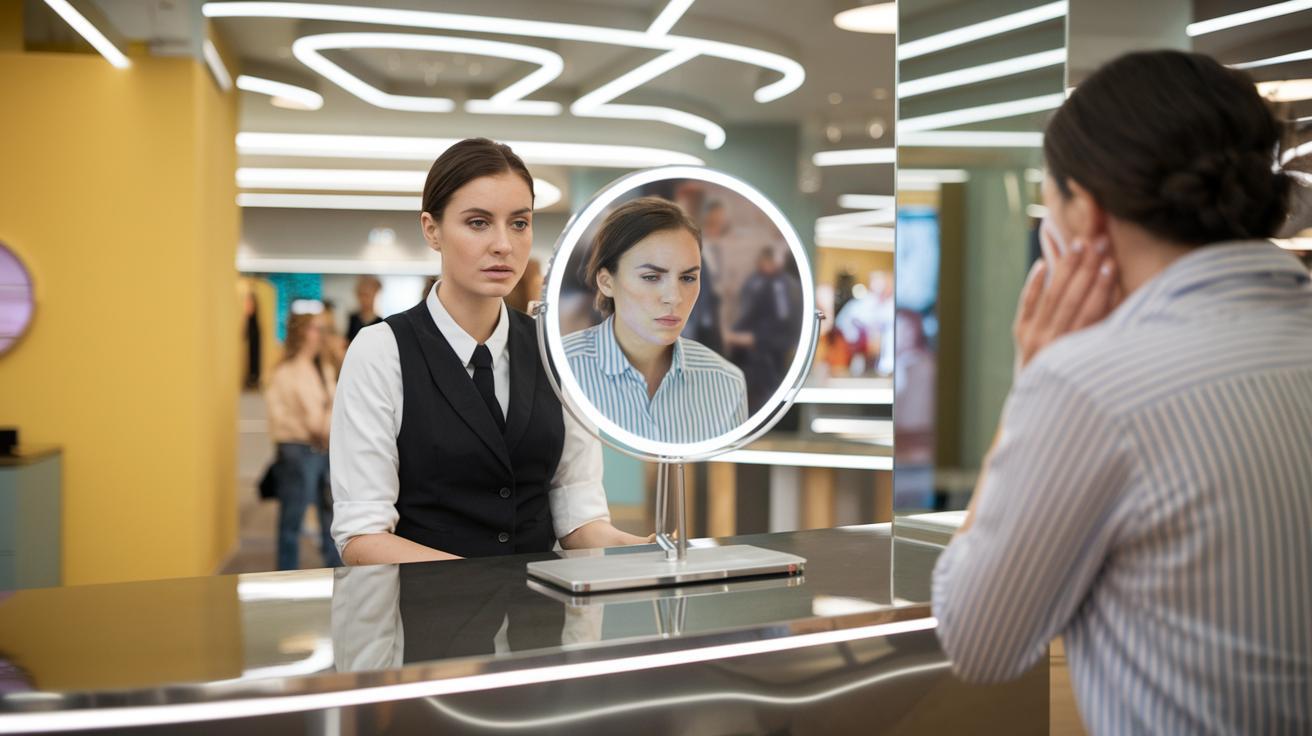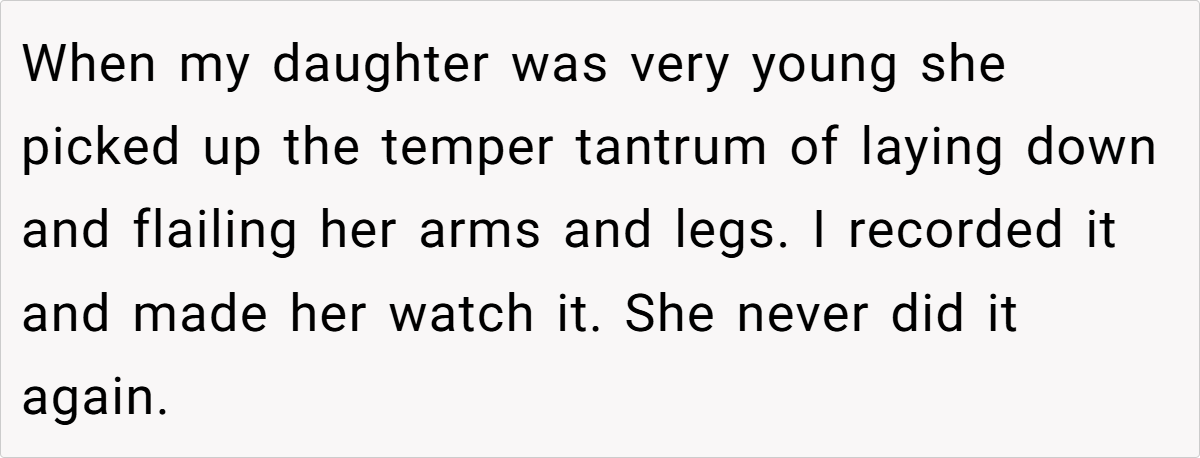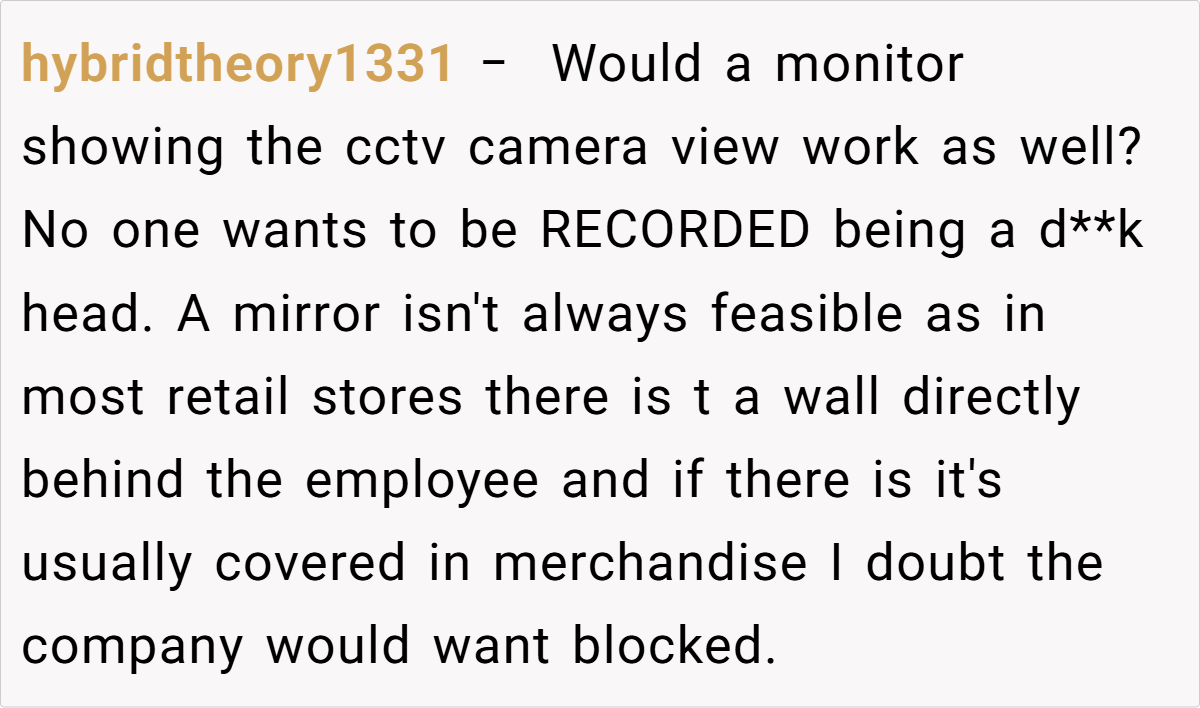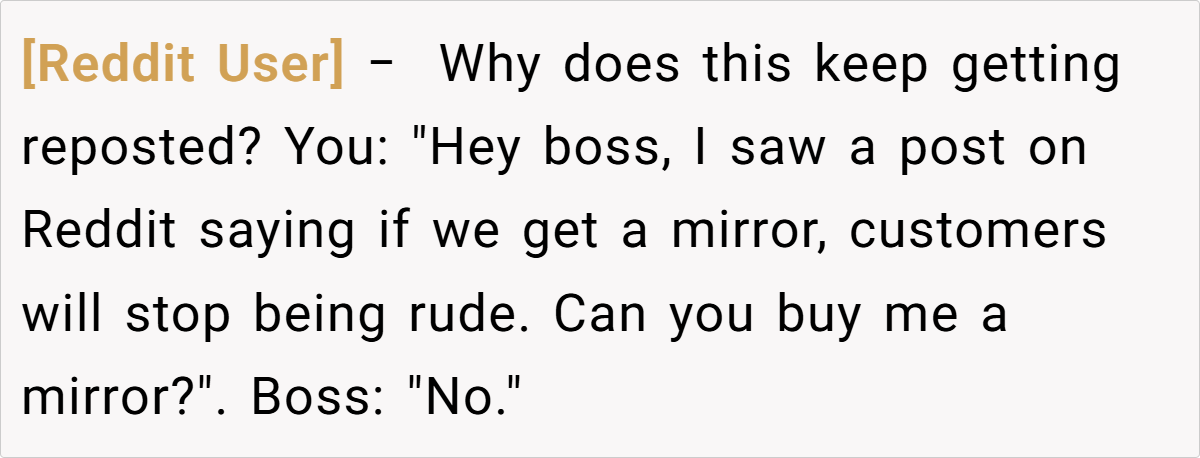Seeing is Believing: A Clever Trick to Tame Tension in Retail and Beyond
Imagine a world where a simple mirror can transform an angry customer into a momentarily self-aware individual. It may sound quirky, but this Life Pro Tip taps into a profound psychological truth.
Whether you’re at a bustling retail counter or navigating the ups and downs of parenting, the idea of using reflective surfaces to nudge behavior has a surprisingly forward thinking charm. The original post that sparked this discussion invites us to consider how a well-placed mirror might encourage a quick dose of self-reflection.
Consider the vivid scene: a frazzled cashier, a frustrated shopper, and—right behind the counter—a mirror silently urging both parties to pause and reconsider their actions. Even a playful parenting hack, where a child learns from watching her own tantrum, sets the stage for a narrative that’s equal parts practical advice and humorous insight.

‘LPT: Put a mirror behind you at the counter or at your desk. This way angry customers who approach you will have to see themselves in the mirror behind you and the chances of them behaving irrationally lowers significantly. No one wants to see themselves act like a d**khead.’

Placing a mirror behind you might seem like a quirky trick, but it taps into deep psychological principles. This approach, whether used in retail or even in parenting, relies on the idea that self-awareness can curb impulsive behavior. It’s an intriguing concept that prompts us to rethink how our immediate surroundings subtly guide our actions, nudging us toward a better version of ourselves.
In the original post, the OP recounts how a mirror not only helped de-escalate heated encounters with customers but also served as a parenting tool. A young child, notorious for temper tantrums, stopped misbehaving after watching a recording of her own flailing. This dual narrative highlights that while the mirror effect might work wonders in some situations, its effectiveness can vary based on context and personality. Such contrasting experiences remind us that human behavior isn’t one-size-fits-all.
Broadening the discussion, social psychology has long emphasized the role of self-awareness in regulating behavior. Research by Duval and Wicklund (1972) suggests that when individuals catch a glimpse of themselves, they are more inclined to align their actions with their self-image. This phenomenon isn’t limited to controlled experiments it permeates everyday life, influencing everything from customer interactions to personal growth in subtle yet significant ways.
As Dr. Robert Cialdini, renowned psychologist and author of Influence: The Psychology of Persuasion, states, “We are wired to seek consistency between our actions and our self-image. A simple mirror can remind us of who we aspire to be, often curbing anti-social behavior.” (Source: Influence at Work). His insights echo through the varied anecdotes shared online, illustrating that a reflective surface can be a quiet but potent catalyst for change.
For those considering the mirror method, a measured approach is key. In retail settings, for instance, the mirror might be one component of a broader strategy to promote calm and accountability. Similarly, parents might pair this trick with positive reinforcement to guide behavior. While not a cure-all, the mirror technique offers a subtle reminder that often, a moment of self-reflection is all we need to transform a situation for the better.
Here’s what Redditors had to say:
Here are some hot takes from the Reddit community—candid, humorous, and refreshingly offbeat.










These popular opinions spark lively debate, inviting us to ask: do these tactics work universally, or is the mirror effect just a clever trick of perspective?
In conclusion, whether you’re a retail professional or a parent seeking creative behavior management, the mirror tip challenges us to reconsider how we might use everyday objects to spark self-reflection and change. What would you do if you found yourself in a similar situation? Share your thoughts and experiences below—let’s keep the conversation as reflective as the mirror itself.

